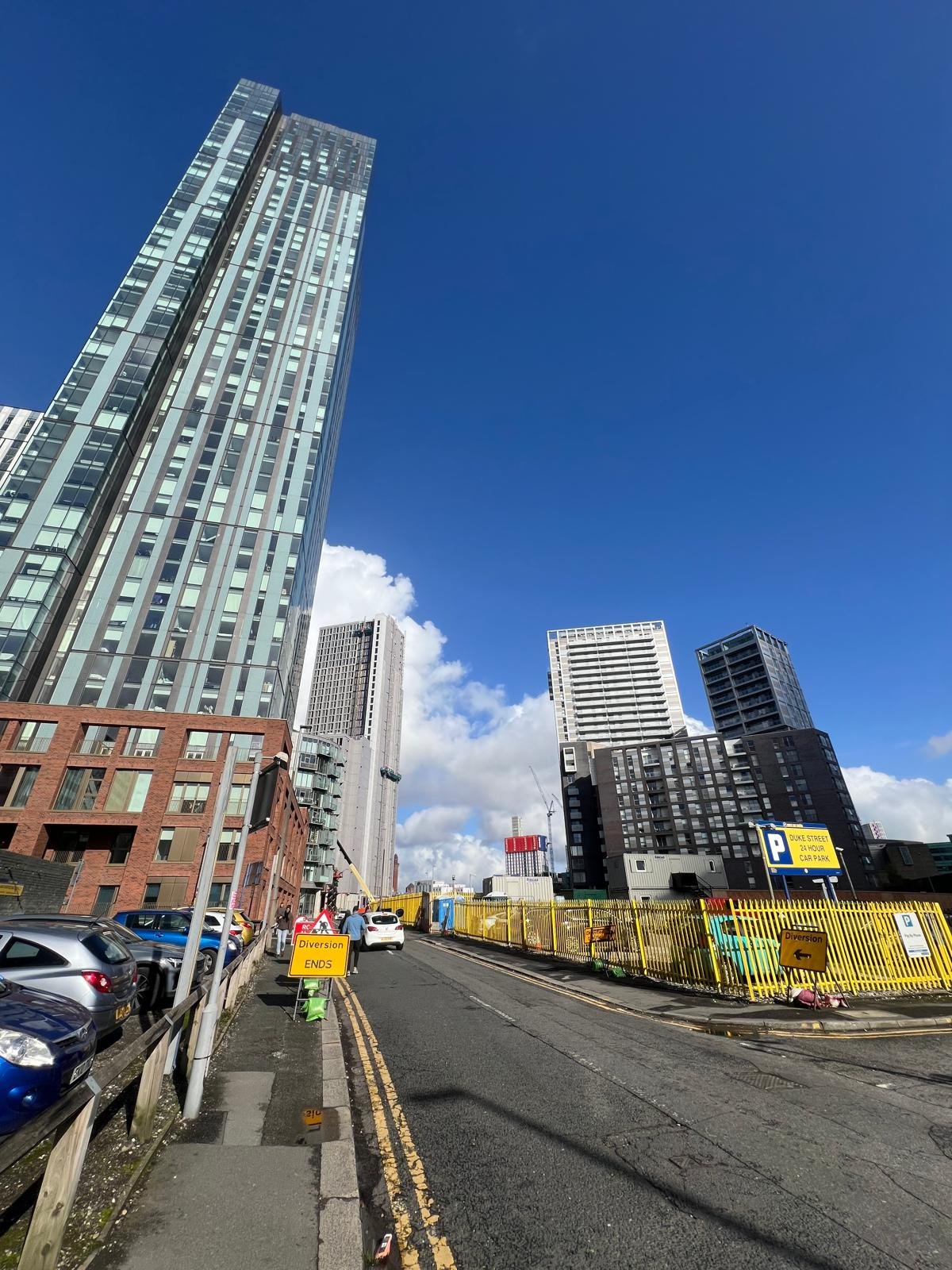James on… What Makes a Framework Work
Associate director, James, joined the team in May 2023 after 14 years in the public sector. Following eight years at Trafford Council, James worked at Salford City Council, first as a case officer with a focus on large city centre schemes and then as a team leader.
As we consider the value of development frameworks in spatial planning we’ve asked him share with us his reflections on this point in his career.
From your time working in the public sector, what was your experience of development frameworks?
The Greengate area was an exciting part of the city to be working in with huge amounts of potential. This was once the medieval heart of Salford, and it is so close to the centre of Manchester. We could see that with some targeted regeneration, Greengate would shake off the label of being “Manchester’s commuter car park”.
What did the Council do well with Greengate?
The latest iteration of the framework has the delivery of public realm and infrastructure at its heart. It encourages high rise developments on certain plots but it also makes clear that developers will be expected to deliver – not just fund – adjacent public realm infrastructure.
Developers know from the off what land has been earmarked for public realm rather than a developable plot. Setting out this degree of detail gives developers clarity, boosting confidence.
What key ingredients should a council embrace when drawing up a development framework?
Set out a clear vision…
Salford knew it had to work with the market and give enough incentive for developers to come forward – in this instance, allowing greater height.
But if you take a closer look, in most instances the tallest developable plots are next to the key public realm interventions that the Council wanted to secure.
There’s a clear strategy for delivery there.
…while still retaining an element of flexibility
The Council welcomed open dialogues with developers and accepted that there may be other ways to deliver the same vision.
The Greengate plan recognises that markets change – a lesson learnt from the 2005 and 2014 iterations of the Framework. Allowing flexibility ensured that the market wasn’t put off but could have the confidence that a viable scheme would be achievable.
When the Euan Kellie team approached Salford Council to promote One Heritage Tower, Euan and I found ourselves sitting on opposite sides of the table. Their client, One Heritage, sought to go even higher than the parameters indicated in the development framework. But the proposal was high in design quality and proposed to deliver exceptional public realm, and because of the flexibility incorporated into the document, it was approved.
When built, this will be the tallest building in Salford.
Market facing
Salford has joined forces with a selective number of development partners. These can really work, because you build trust on a foundation of shared values and overarching goals for an area.
Partnerships like this are particularly effective because they instil a longer-term interest in a place, beyond the red line of a development plot, which is fantastic for effective placemaking.
It doesn’t have to be so selective. Some say that working with only a limited number of developers risks streetscapes becoming monotonous (if you were at Place North West’s GM Development Update in September, you’ll remember Andrea Winder’s quip about “Muse-chester”). However, Salford has had successful partnerships with Salboy and Renaker over the last 10 years and the quality of the built environment is varied as well as outstanding.
A proactive local authority
Above it all, local authorities must be proactive, up for the challenge and welcoming of development.
Salford worked hard to consolidate land ownership in Greengate down to two or three major land owners, which paved the way for longer term, trusted development partnerships.
From my experience it’s very much a two-way process between local authority and developer – whether this is a development partner or otherwise.
Too often public and private sector actors can get entrenched in their views and misunderstand motives, so effective collaboration and partnerships play a huge role in achieving quality places. A proactive local authority that is willing to work with developers understands this.
Planning in action
Frameworks strike the right balance in taking note of the detail, like which heritage assets or focal points need to be taken into account, but also take a wide enough view to see the big picture and avoid piecemeal development.
For me, Greengate Regeneration Framework is a brilliant example of a plan in action.


